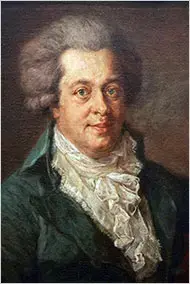Requiem in D minor
- classical music
- Aug 19, 2023
- 2 min read
Updated: Oct 11, 2023
Requiem in D minor K. 626
Composer: Wolfgang Amadeus Mozart
Date of publication: 1791 or 1792

In July of 1791, Mozart's last requiem was commissioned by a mysterious man, who Mozart called the "unknown gray stranger." The man commissioned Mozart to write his requiem, with the added stipulation that he must never try to uncover the strange man's identity. Despite these unusual circumstances, Mozart threw himself into the project, even as his health and mental stability aggressively deteriorated (Mozart believed himself the victim of a slow-acting poison), and hoped to leave this final piece behind as his legacy. However, when he died on December 5th, 1791, he had finished only the Requiem and Kyrie movements, leaving just basic ideas of the bass lines and voice parts to the Hostias. Mozart's wife, Constanze, was tasked to complete the rest of the commission, but as she was not nearly as talented as him, she sought the aid of other composers in finishing what Mozart started. At first, she turned to Joseph von Eybler, but he was only able to finish parts of the piece past the Kyrie. Afterwards, Constanze consulted Franz Xaver Süssmayr, one of Mozart's students, who borrowed many of Eybler's ideas but also completed the Lacrymosa, the Sanctus, Benedictus, and the Agnus Dei (signature pieces required in a requiem besides the Lacrymosa).
To finish out the piece, Süssmayr added a Lux aeterna section, which adapted the first two opening movements to different words. Afterward, Süssmayr rewrote the whole requiem in his own handwriting, so that when they handed it to the commissioner no one would be able to tell that it was an amalgamation of multiple composers' works. They even went as far as to forge Mozart's signature to make the piece look more compelling. However, later on, many critics were skeptical of whether Mozart intended to finish the requiem in Süssmayr's fashion, since they believed that Mozart would never repeat the two opening movements. Eventually, it was discovered that the "unknown gray stranger" was Count Franz von Walsegg, who intended the piece as a commemoration of his late wife. Von Walsegg had made the commission in secret in hopes of stealing credit for writing the requiem, something von Walsegg had done with many of “his” other works.
Fun Fact: Much of the Phantom Troupe's theme from Hunter x Hunter are based on this requiem
Movements:
I. Introitus
Requiem aeternam
Kyrie
II. Sequentia
Dies irae
Tuba mirum
Rex tremendae
Recordare
Confutatis
Lacrymosa
III. Offertorium
Domine Jesu
Hostias
IV. Sanctus
V. Benedictus
VI. Agnus Dei
VII. Communio
Lux aeterna
Cum sanctis tuis


